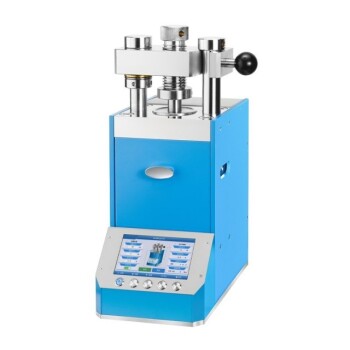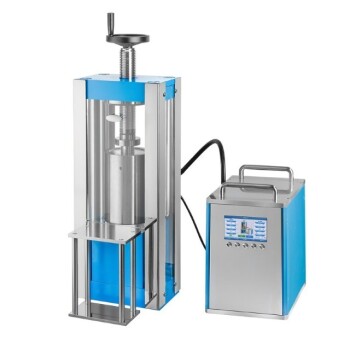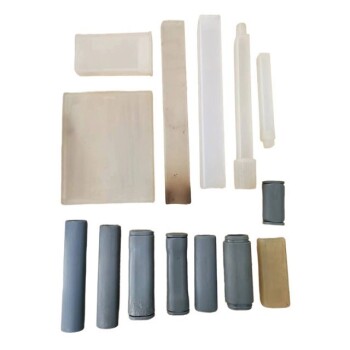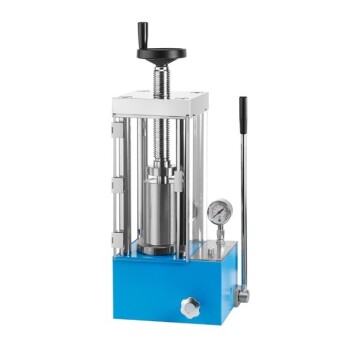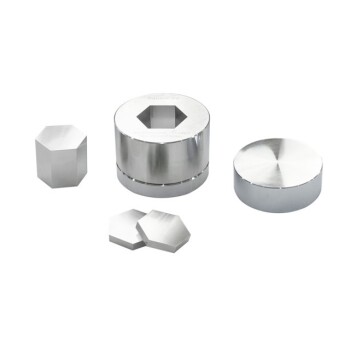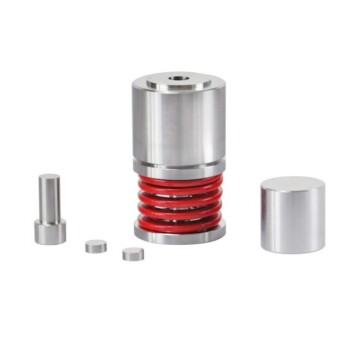In essence, isostatic pressing is a manufacturing process that compacts powders into a solid mass using extremely high, uniform pressure. The primary methods are defined by the temperature at which this process occurs: Cold Isostatic Pressing (CIP), Warm Isostatic Pressing (WIP), and Hot Isostatic Pressing (HIP). Each technique is chosen based on the specific material being processed and the desired final density and properties of the component.
The core difference between isostatic pressing methods is not the pressure, but the temperature. While all types use uniform pressure to eliminate voids, the addition of heat is what allows for the final fusion of material particles into a fully dense, high-performance solid.
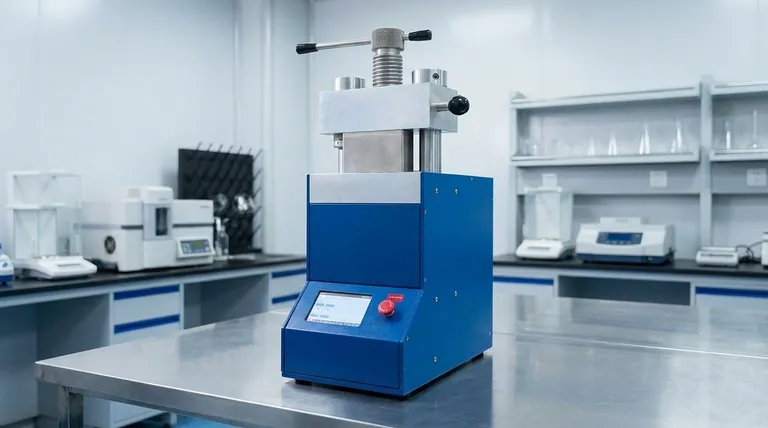
The Fundamental Principle: Uniform Pressure
Isostatic pressing is a powder metallurgy technique designed to solve a simple problem: traditional pressing with a die only applies force in one direction, leading to non-uniform density.
How It Achieves Uniformity
The powder to be compacted is first sealed in a flexible, deformable mold or container. This container is then submerged in a fluid—typically oil or water for cold pressing, and an inert gas like argon for hot pressing.
When the fluid is pressurized, it exerts equal force on every single surface of the mold simultaneously. This uniform pressure collapses the mold inward, compacting the powder evenly from all directions and dramatically reducing internal porosity.
The Core Methods of Isostatic Pressing
The application of temperature during this process defines the three distinct methods, each with unique capabilities and applications.
Cold Isostatic Pressing (CIP): Densification at Room Temperature
Cold Isostatic Pressing (CIP) is performed at or near room temperature. Its primary purpose is to compact a powder into a solid shape with sufficient strength for handling and further processing.
This initial, un-sintered part is known as a "green" compact. While it has uniform density, it still contains significant porosity and lacks the final strength of a fully processed component.
CIP itself is divided into two sub-types:
- Wet Bag: The sealed mold is manually submerged in the pressure vessel's fluid, making it ideal for large parts or low-volume production.
- Dry Bag: The mold is integrated into the pressure vessel, allowing for faster, automated cycles well-suited for high-volume manufacturing of smaller parts.
Warm Isostatic Pressing (WIP): A Niche for Polymers
Warm Isostatic Pressing (WIP) operates at a moderate temperature, typically below the material's melting point but high enough to increase its ductility.
This method is most often used for compacting polymers, plastics, and other materials that cannot withstand the extreme temperatures of HIP but benefit from some thermal softening during compaction.
Hot Isostatic Pressing (HIP): Fusing Particles with Heat and Pressure
Hot Isostatic Pressing (HIP) is the most powerful of the three methods. It applies both extreme pressure and high temperature simultaneously, often in a single cycle.
The combination of heat and pressure allows the material particles to deform, diffuse, and bond together on an atomic level. This process can eliminate virtually all internal porosity, resulting in a component that is 100% dense with mechanical properties often superior to those made by casting or forging. HIP is essential for high-performance metals, alloys, and advanced ceramics used in aerospace and medical implants.
Understanding the Trade-offs
Choosing the right method requires a clear understanding of the trade-offs between cost, process complexity, and the final material properties you need to achieve.
Cost and Equipment Complexity
CIP systems are the simplest and least expensive. HIP systems are far more complex and costly due to the need to safely manage both extreme pressures and temperatures, often requiring specialized furnaces and inert gas handling. WIP falls in between.
Final Density and Material Properties
CIP produces a green compact with uniform but incomplete density. To achieve full strength, a separate high-temperature sintering step is almost always required.
HIP is unique in its ability to produce a fully dense part in a single process. This eliminates residual porosity, which is a common point of failure, leading to superior fatigue life, ductility, and overall strength.
Throughput and Cycle Time
Dry Bag CIP is a very fast, automated process capable of high throughput for smaller components. Wet Bag CIP is slower and more labor-intensive.
HIP is fundamentally a batch process with long cycle times—often several hours—due to the time needed to heat up and cool down the vessel. This makes it less suitable for high-volume, low-cost manufacturing.
Selecting the Right Isostatic Pressing Method
Your choice depends entirely on your end goal, your material, and your budget.
- If your primary focus is to create a uniform powder compact for subsequent sintering or machining: Use Cold Isostatic Pressing (CIP) for its cost-effectiveness and ability to produce a handleable green part.
- If your primary focus is to achieve maximum density and superior mechanical properties in metals, alloys, or advanced ceramics: Use Hot Isostatic Pressing (HIP) to eliminate all porosity and create a fully consolidated, high-performance component.
- If your primary focus is to compact polymers or other materials that benefit from moderate heat: Use Warm Isostatic Pressing (WIP) as a specialized solution that balances density improvement with thermal sensitivity.
Ultimately, matching the process to the material and the desired performance characteristics is the key to successfully leveraging this powerful manufacturing technology.
Summary Table:
| Method | Temperature | Key Features | Common Applications |
|---|---|---|---|
| Cold Isostatic Pressing (CIP) | Room Temperature | Uniform density, cost-effective, green compact | Metals, ceramics for sintering |
| Warm Isostatic Pressing (WIP) | Moderate (below melting point) | Increased ductility, moderate heat | Polymers, plastics |
| Hot Isostatic Pressing (HIP) | High Temperature | Full density, superior strength, single process | Aerospace alloys, medical implants |
Ready to enhance your lab's efficiency with the right isostatic press? KINTEK specializes in lab press machines, including automatic lab presses, isostatic presses, and heated lab presses, tailored for laboratory needs. Our solutions deliver precise compaction, improved material density, and superior performance for metals, ceramics, and polymers. Contact us today to discuss how we can support your projects with reliable, high-quality equipment!
Visual Guide
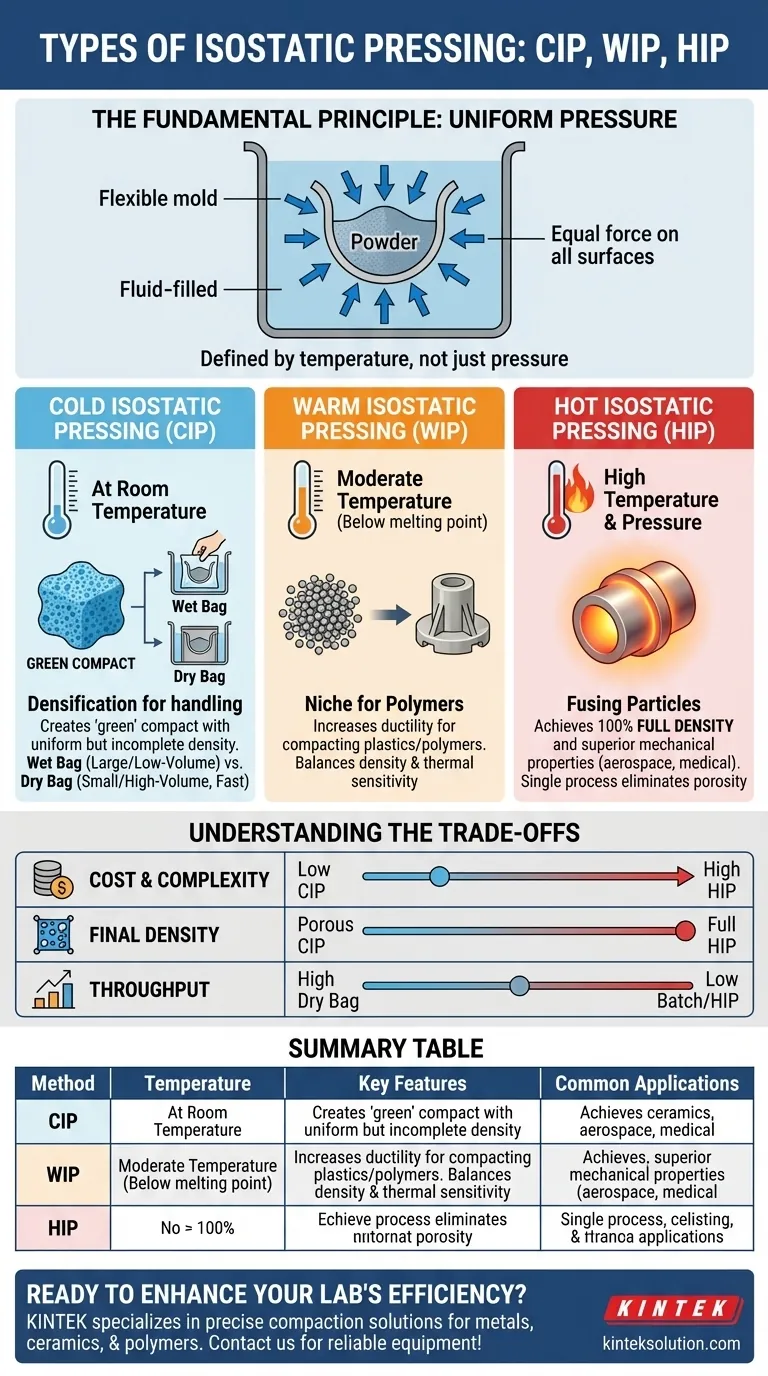
Related Products
- Automatic Lab Cold Isostatic Pressing CIP Machine
- Electric Split Lab Cold Isostatic Pressing CIP Machine
- Lab Isostatic Pressing Molds for Isostatic Molding
- Manual Cold Isostatic Pressing CIP Machine Pellet Press
- Laboratory Hydraulic Press 2T Lab Pellet Press for KBR FTIR
People Also Ask
- What is the advantage of cold isostatic pressing in terms of controllability? Achieve Precise Material Properties with Uniform Pressure
- What are the two main techniques used in cold isostatic pressing? Wet-Bag vs. Dry-Bag Methods Explained
- What are the common forming processes in advanced ceramics? Optimize Your Manufacturing for Better Results
- How can businesses optimize Cold Isostatic Pressing processes? Boost Quality and Cut Costs
- How does cold isostatic pressing improve production efficiency? Boost Output with Automation and Uniform Parts
